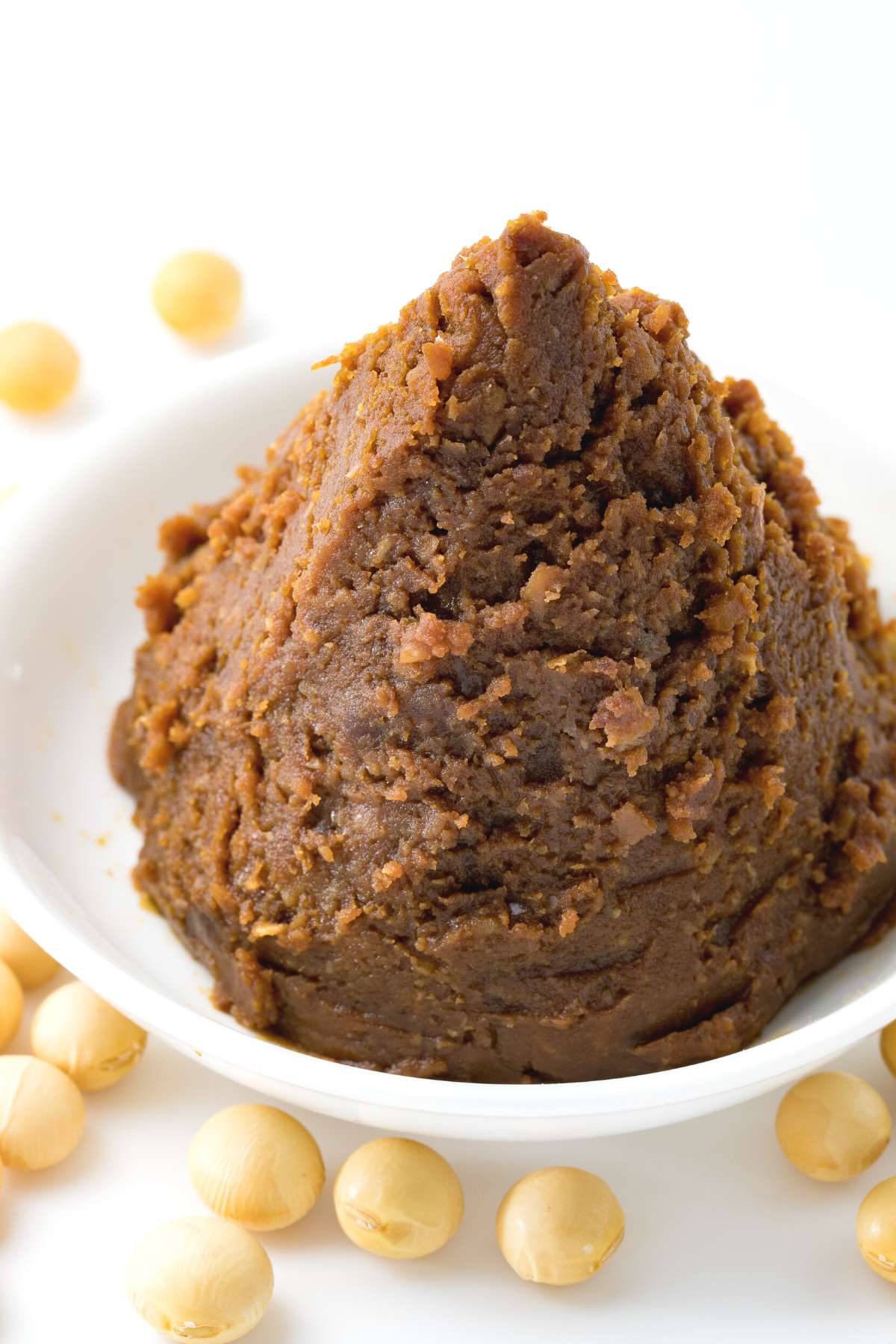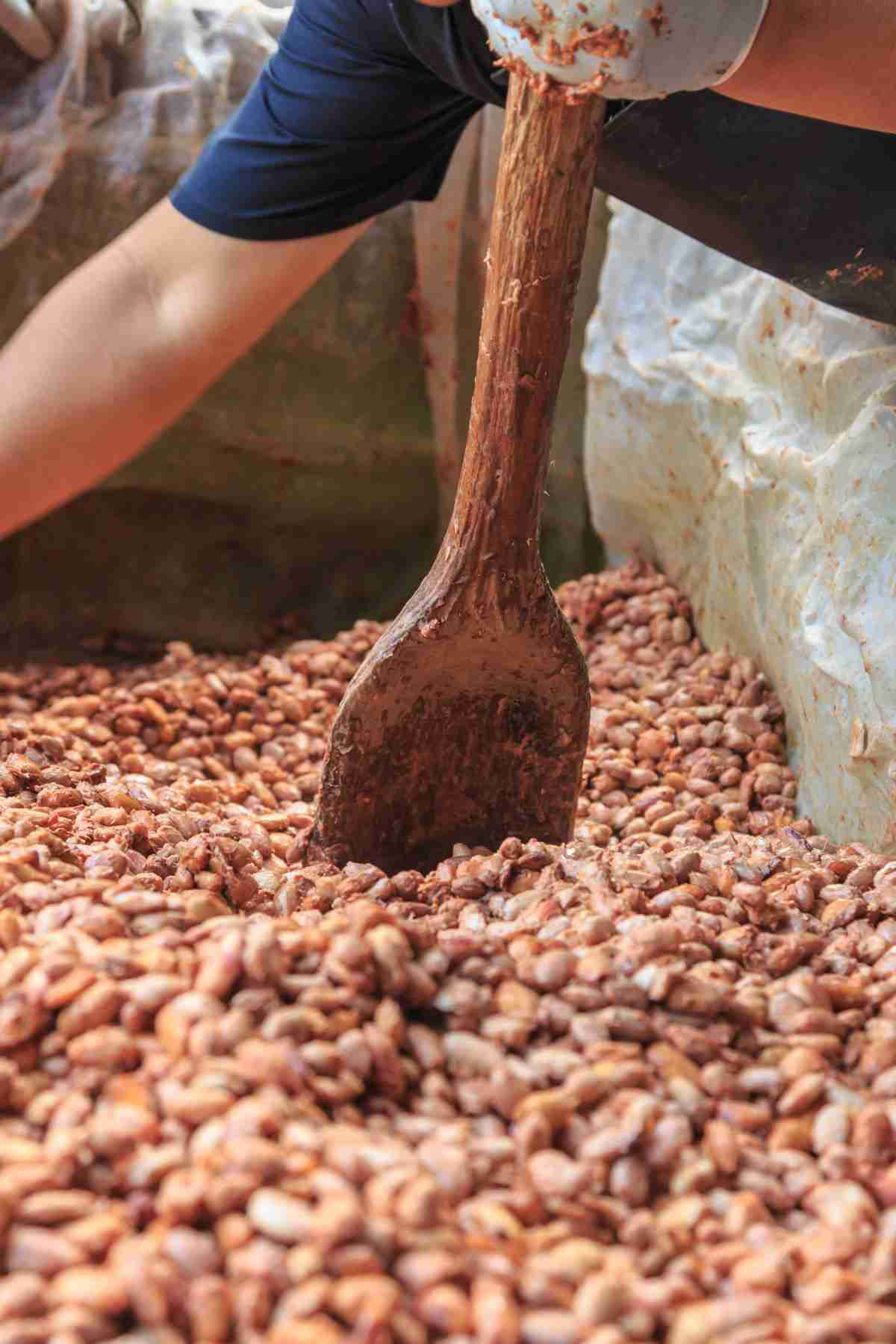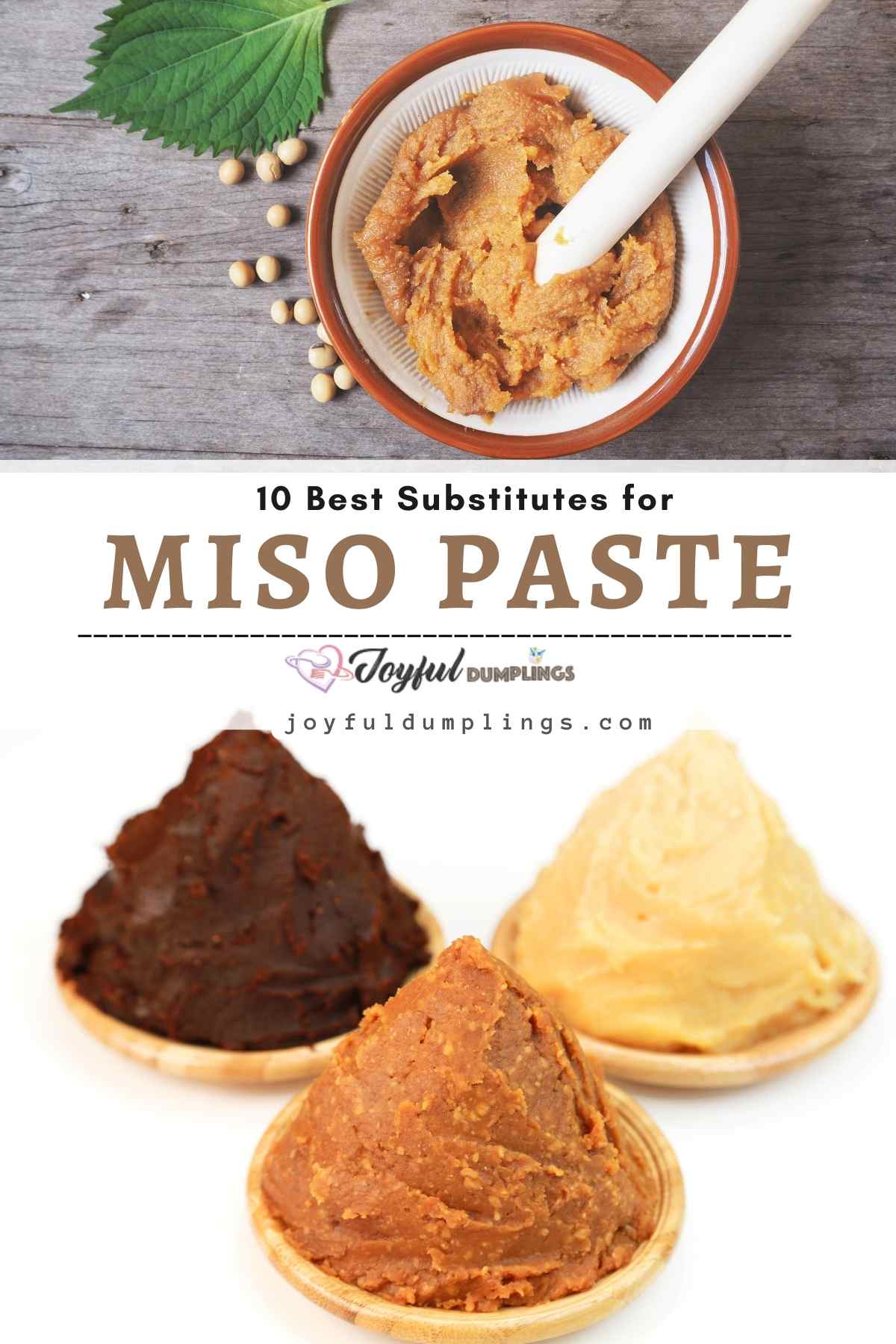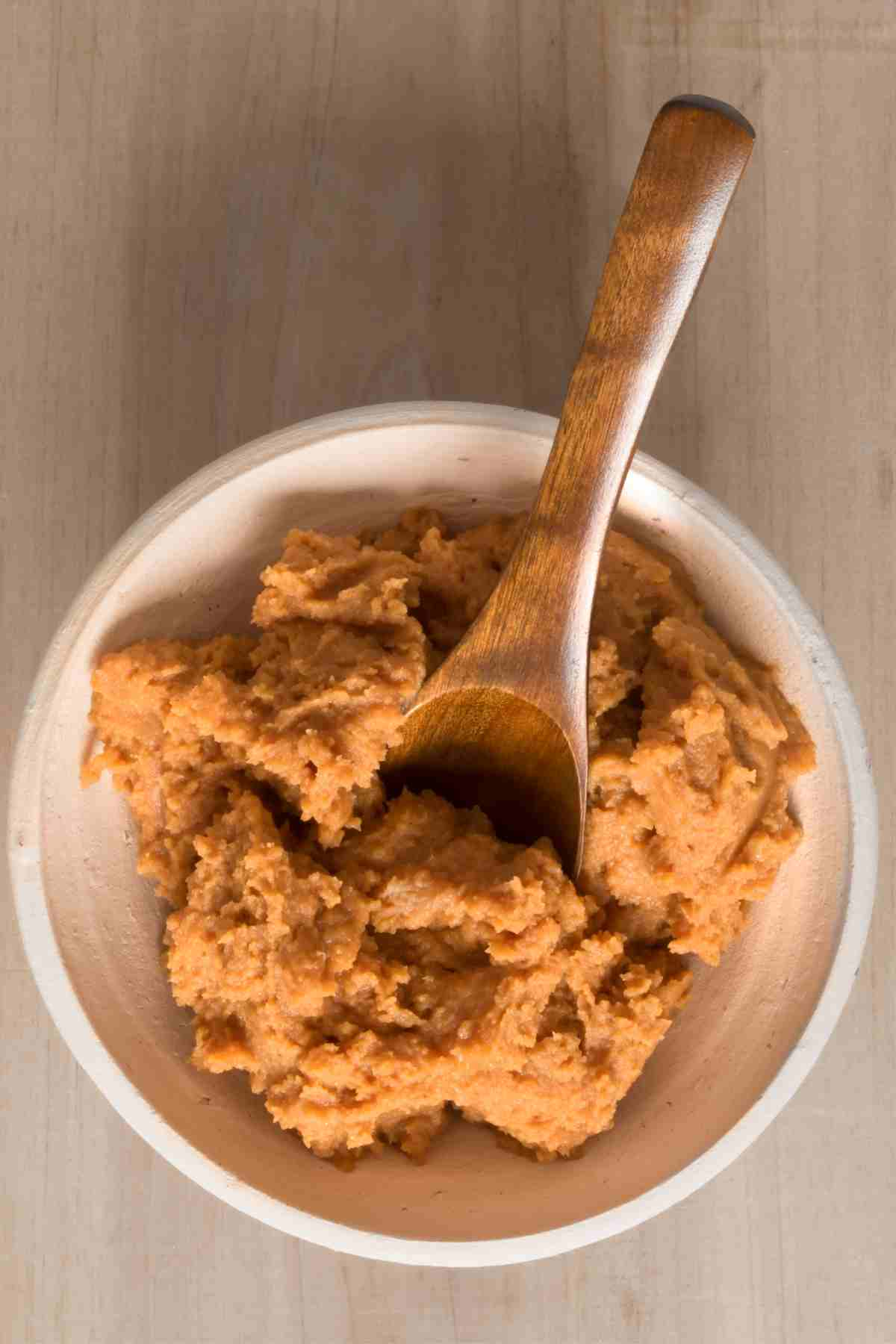Last Updated on April 14, 2024
What is miso? Are you intrigued about miso, a delicious ingredient often pointed out in Japanese cuisine? Miso is a versatile ingredient in Japanese and other Asian cuisines, although few people know about them. It is often used in hot pot or miso soup, noodles, yakitori, and other dishes. Also, miso has become a global staple.

Let’s explore the history of miso, its varieties, culinary applications, health benefits, and miso paste substitutes.
Join us on a delightful excursion to discover why miso in your pantry may enhance your home cooking!
What is Miso Paste?

Miso paste is a fermented soybean paste and is a famous Japanese spice with an umami taste. Soybeans, salt, koji (a fungus), and other ingredients are fermented to make it.
Traditional Japanese cuisine relies on miso. Miso is made by fermenting steamed soybeans for weeks or years to create a savory, umami-flavored sauce.
Miso may be smooth or chunky and golden yellow or deep red or brown, depending on the length of fermentation. The fascinating combination of soybeans and salt kept together by koji fungus makes this versatile seasoning.
How is Miso Made?

Traditional miso is transformed during fermentation to enhance its flavor and texture. To make miso, blend soybeans (the main ingredient of miso) or soy sauce, salt, and koji (a fermenting fungus).
Weeks (short fermentation), months, or years might pass during fermentation. Various fragrances arise when soybeans break down and mingle with koji enzymes. Health benefits from this natural process include helpful microorganisms and enzymes.
The grain used to inject koji differentiates miso. Rice, barley, and soybean koji make kome, mugi, and mame miso. Commercially produced miso is rice koji kome.
The fermentation time may change the color, texture, and taste of miso, resulting in white (Shiro), red (aka) miso, or reddish-brownish miso. These versions provide chefs with several ways to add umami to their dishes.
What Does Miso Taste Like?
Miso is a perfect umami benchmark. Toasty, savory, salty paste with a hint of sweetness characterizes the paste and soup’s rich, savory flavor.
This umami flavor underpins much Japanese food.
Different Types of Miso in Japanese Cuisine
There are many different varieties of miso, each with a different color and flavor profile to suit a wide variety of culinary tastes.
Japan has different types of miso tastes, from Kyusyu to Hokkaido. Based on native ingredients and environment, each location has its own miso style. Rice is the major component. However, others include barley or legumes.
- Kome Miso
Kome miso accounts for 80% of Japanese miso manufacturing. Rice is kome. This white rice miso contains salt, soybeans, and koji rice. Brown rice koji makes genmai miso.
- Mugi Miso
This barley miso contains salt, soybeans, and barley koji. This variety is abundant in southern Japan’s Kyusyu area.
- Mame Miso
This miso is popular in Chubu (middle Japan), where the name means “beans.” Mame miso is a unique Japanese condiment from salt and soybeans (no koji). The saltiness, bitterness, and umami are intense.
- Awase Miso
Awase miso blends misos for the optimum sweet-sour taste. This one has barley and rice. New miso users may utilize it efficiently.
- Hatcho Miso
It is a particular mame miso from Aichi, Japan. “Hatcho miso is completely dark and fudge-like.” This robust miso is fermented using pure soybeans and soybean koji for two to three years.
- Shinshu Miso
It ferments longer than most Shiro miso. Its golden yellow appearance and mild taste make it yellow miso.
- Genmai Miso
It uses brown rice, not white. Its earthy taste and golden brown hue make it pleasant and mild enough to consume uncooked.
- Artisan US-made miso
People prefer Japanese miso because of the country’s miso-making solid heritage, but US businesses that have been exploring different methods may also make good miso.
South River Miso, one of the top domestic miso firms, utilizes short-grain brown rice for its koji, while Maryland-based White Rose Miso uses Carolina Gold rice by Marsh Hen Mill for its white miso.
Different Colors of Miso Paste
The darker the miso, the saltier and more robust the taste. It is prepared with a high proportion of rice and imparts an adorable flavor to dishes. The following are distinct colors of miso:

- White miso has a pale hue and a mild taste with a touch of sweetness.
- Red miso, on the other hand, is a dark miso and more intense in flavor due to its higher salt content.
- Mixed miso combines white and red miso to provide a taste balance.
- Yellow miso (Shinshu) ferments longer and has more soybeans and barley than white miso. It is saltier and more acidic than white miso, making it a versatile condiment or spice.
Furthermore, regional varieties of Japanese miso with different qualities are available in Japan. Sweet and barley miso from Kyushu are two examples.
How to Choose Miso?
When you look for miso at the grocery store, check for quality and the expiration date—store miso in the refrigerator for freshness.
A few considerations must be made to obtain the highest quality miso. First, seek out miso paste that’s prepared with high-quality ingredients, such as soybeans, salt, and koji (a fermenting fungus).
Check the label for additives or preservatives that could affect the miso’s flavor and quality.
Buy miso based on its intended use. Lighter misos are milder and suitable for soups and condiments, while darker miso has a stronger flavor and is great for marinades and miso glazes.
If you can’t find any miso at your local stores, we’ve listed some great substitutes for miso paste.
How to Store Miso?

Store miso correctly to preserve freshness and purity. Transfer miso to an airtight container, like a glass jar with a secure lid. This prevents deterioration from moisture and air exposure.
Find a cold, dark place to store your miso. Store it in a cool, dark place, like a refrigerator or cold pantry, away from sunlight and heat. Refrigeration is necessary for humid climates or infrequent use of miso.
To prevent cross-contamination, use clean utensils when measuring out portions of miso for storage. This prevents the spread of unwanted bacteria into the container.
How to Use Miso
Since miso has recently gained popularity for its great flavor and probiotic and antioxidant properties, why not make the most of it?
A bit of miso goes a long way in enhancing the piquant flavor of your dishes. Here are some wonderful ways to use your miso paste.

- As a base for making soup
Miso soup is the most renowned example of this method, but miso may also be blended with other ingredients to produce a savory basis for vegetable noodle soups, ramen noodle soups, or daikon miso broth recipes. Rice and miso soup recipes are still a favorite Japanese breakfast these days.
- As a pickling agent
Miso is used to pickle a variety of foods, including vegetables and tofu, in miso zuke.
- As a condiment
Miso paste is an excellent all-purpose condiment. To produce meals like miso-flavored vegan burger patties, add a teaspoon or two to salad dressings, marinades, or simmering liquids.
- As a garnish
Miso butter is made by mixing butter, lime juice, and miso paste. Further ingredients like cilantro, green onion, or sriracha can be added for extra flavoring. Miso butter is great on tofu, veggies, or rice.
Health Benefits of Miso
Miso is nutritious and has health benefits due to fermentation. it’s made by fermenting soybeans, salt, and koji and is rich in essential nutrients.
It is a protein source with all amino acids necessary for tissue building and repair. Miso comes with vitamins B12, B6, and K and minerals like manganese, copper, and zinc.
They contain enzymes that aid digestion and improve gut health. Miso is a tasty and nutritious addition to meals. This fermented paste is nutrient-rich with protein, vitamins, and minerals.
Miso is also rich in healthy bacteria for a healthy gut. Fermentation enhances nutrient absorption and provides probiotics for digestion and immune system support. Studies suggest miso consumption may reduce the risk of chronic diseases like heart disease, certain cancers, and age-related cognitive decline.
(Source: National Library of Medicine)
The Bottomline
Miso is a traditional Japanese tasty spice produced from fermented soybeans, salt, and koji fungus.
It imparts a distinct umami taste to meals and may be used in traditional Japanese dishes like miso soup or imaginatively integrated into a wide range of cuisines.
It is a must-have condiment for every kitchen because of its flavor, potential health advantages, and lengthy shelf life.

FAQS
Miso is a fermented soy legume, rice or barley, salt, and occasionally koji (a form of fungi). It is commonly used to lend profundity of flavor to stews, marinades, condiments, and sauces.
You can make homemade miso, but for the best results, make it in late autumn to winter and ferment it in cold winter, chilly spring, and hot summer.
Sign Up to Joyful Dumplings!
Subscribe to our mailing list and join our community!
Thank you for subscribing.
Something went wrong.
